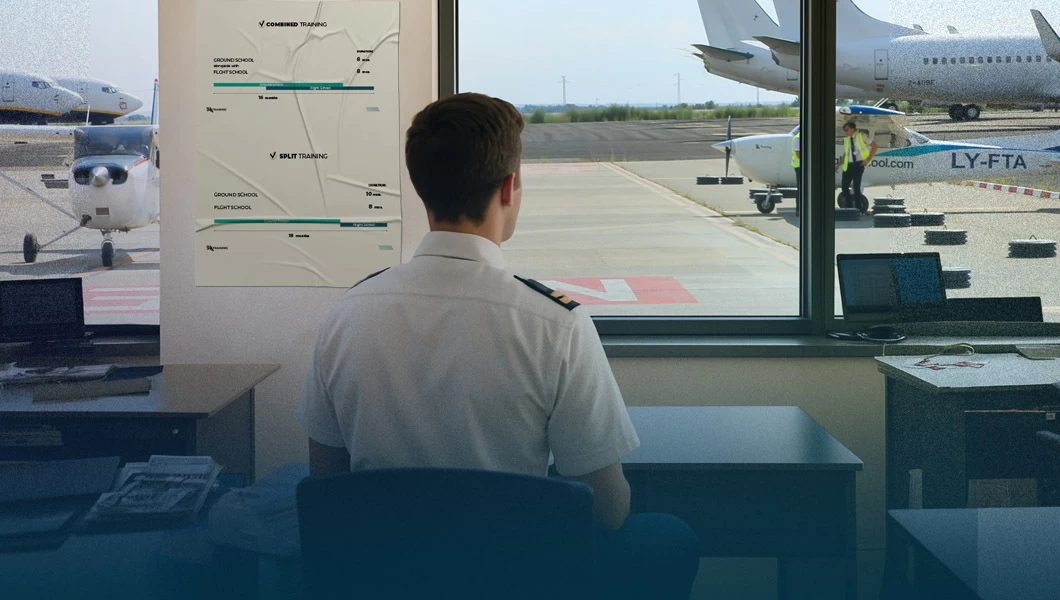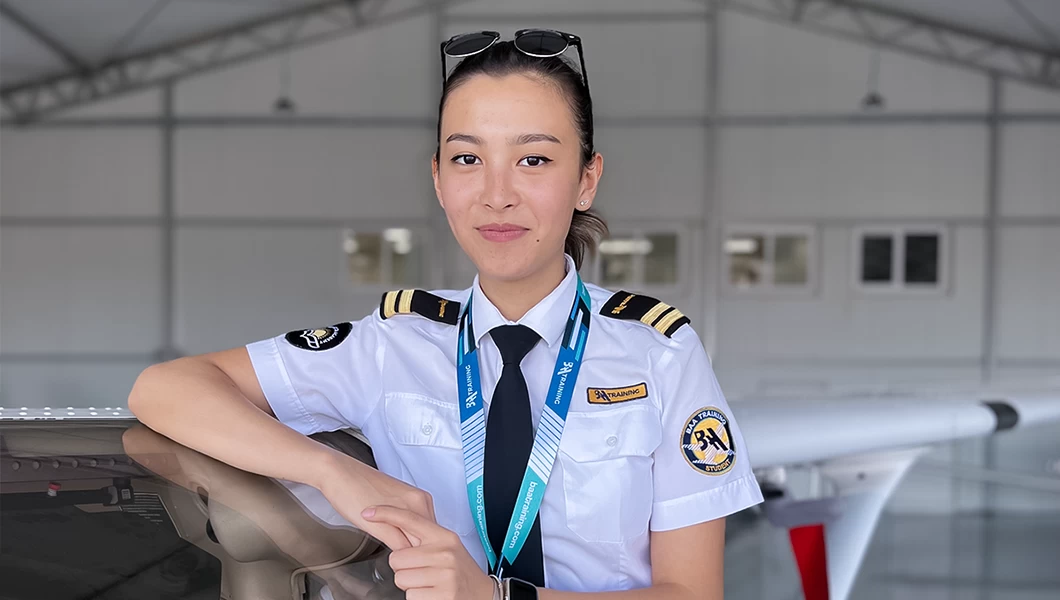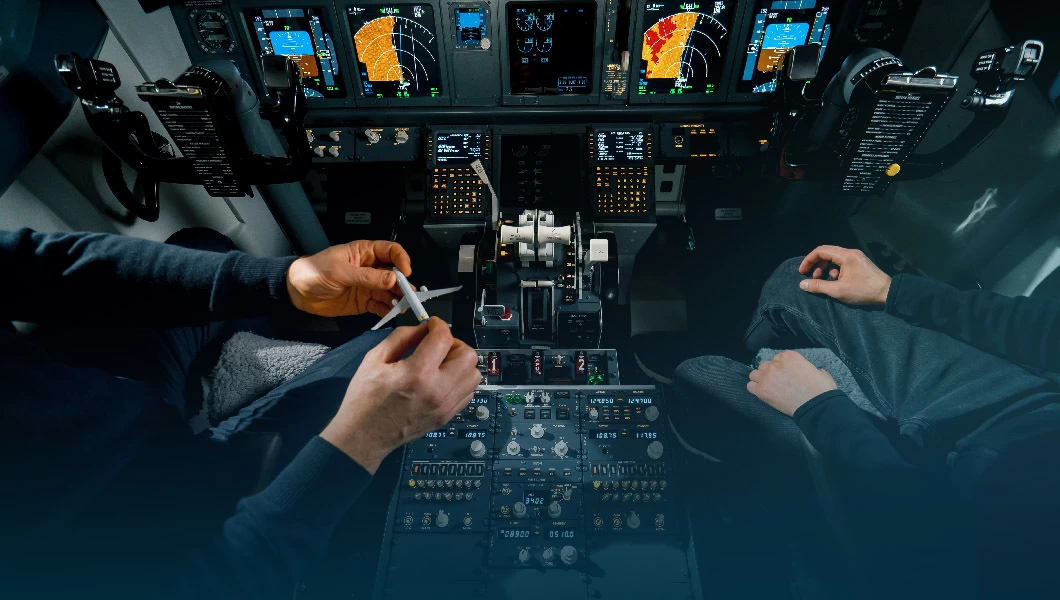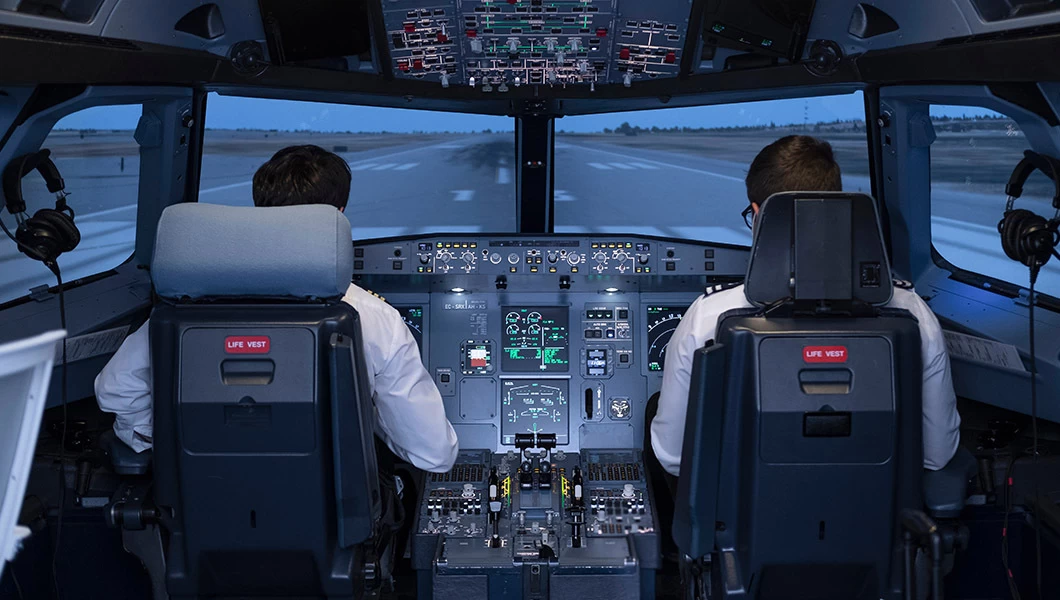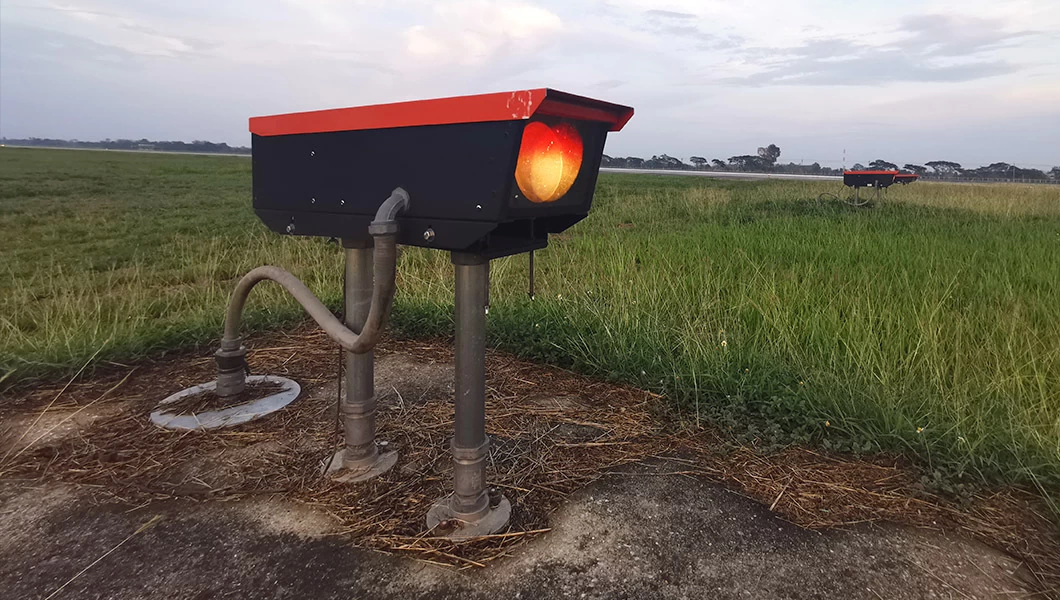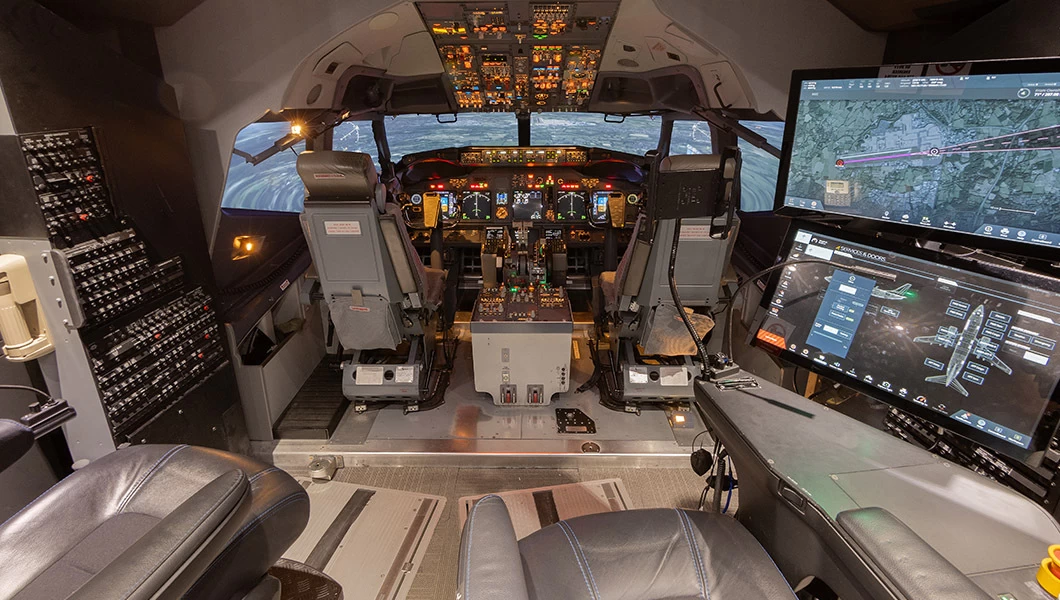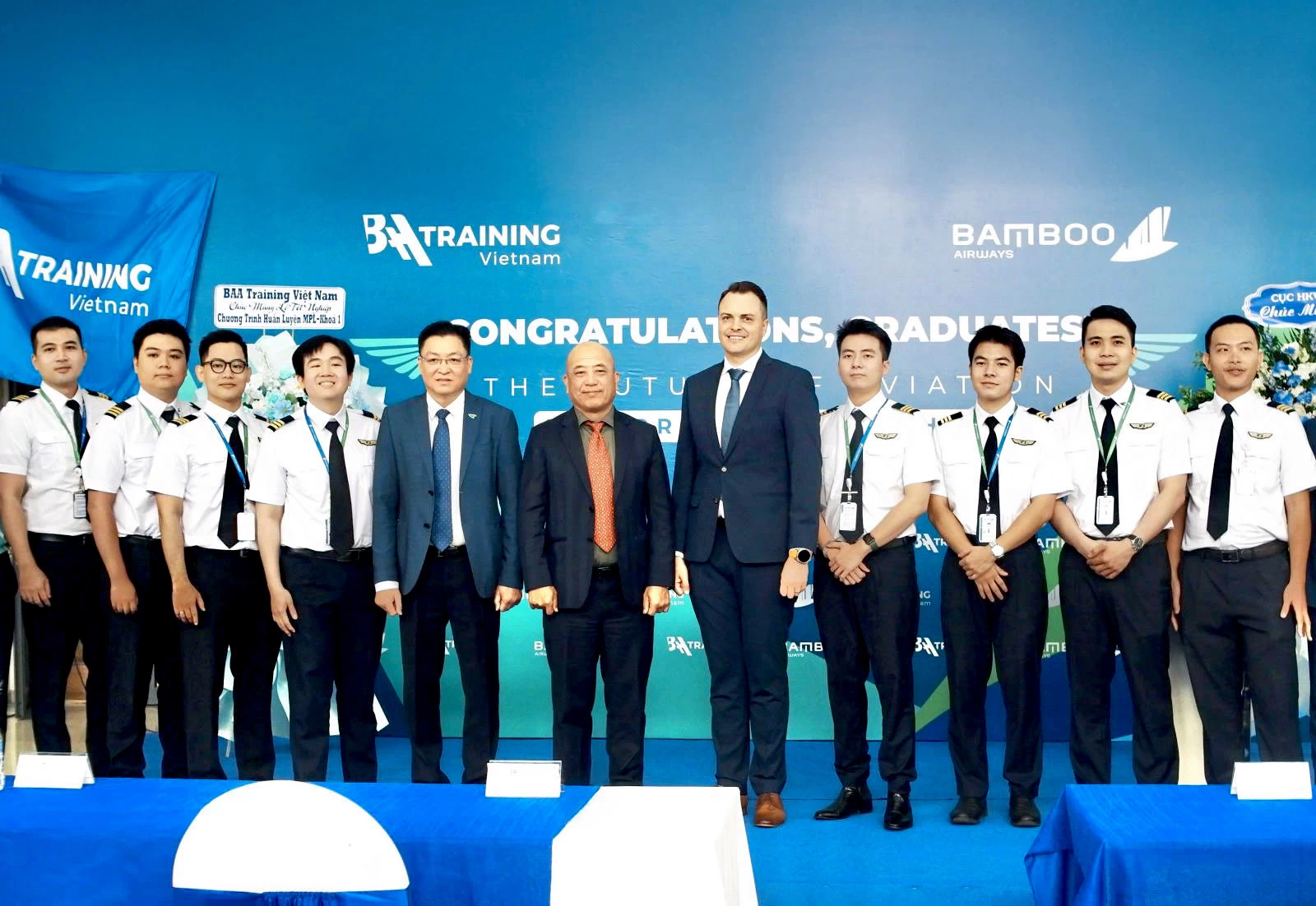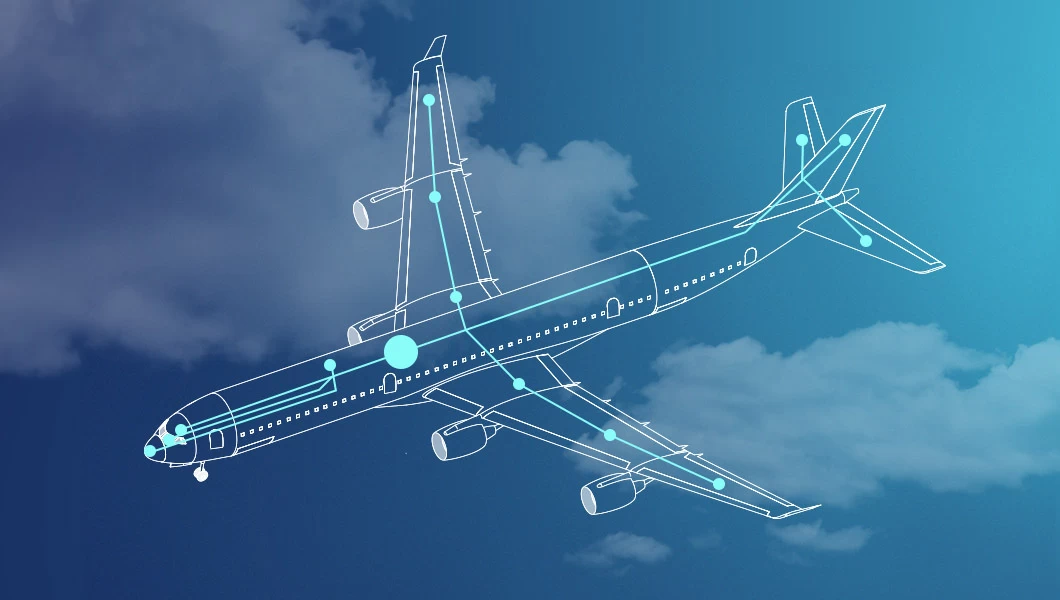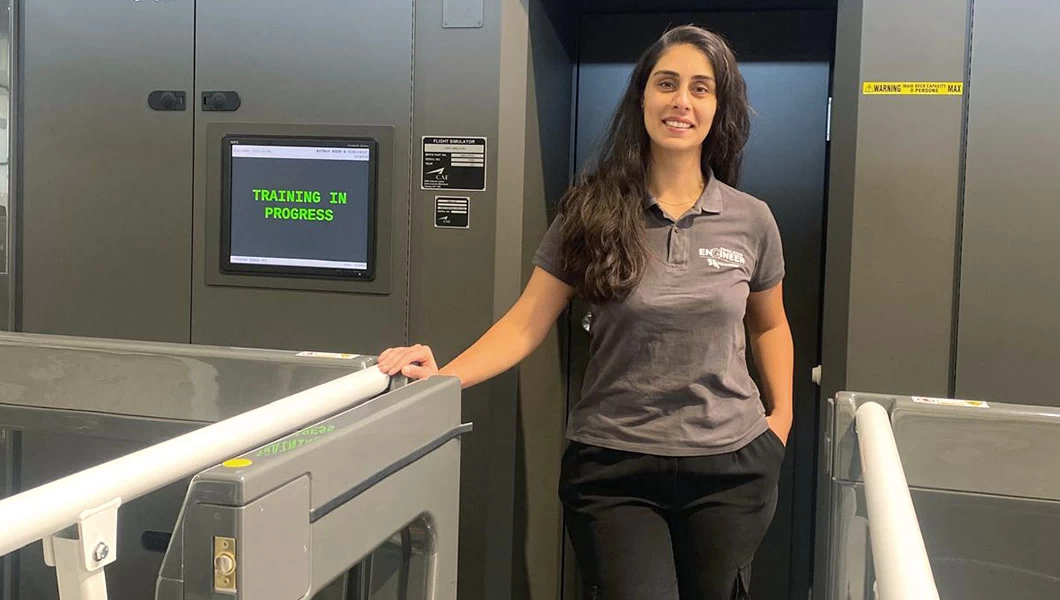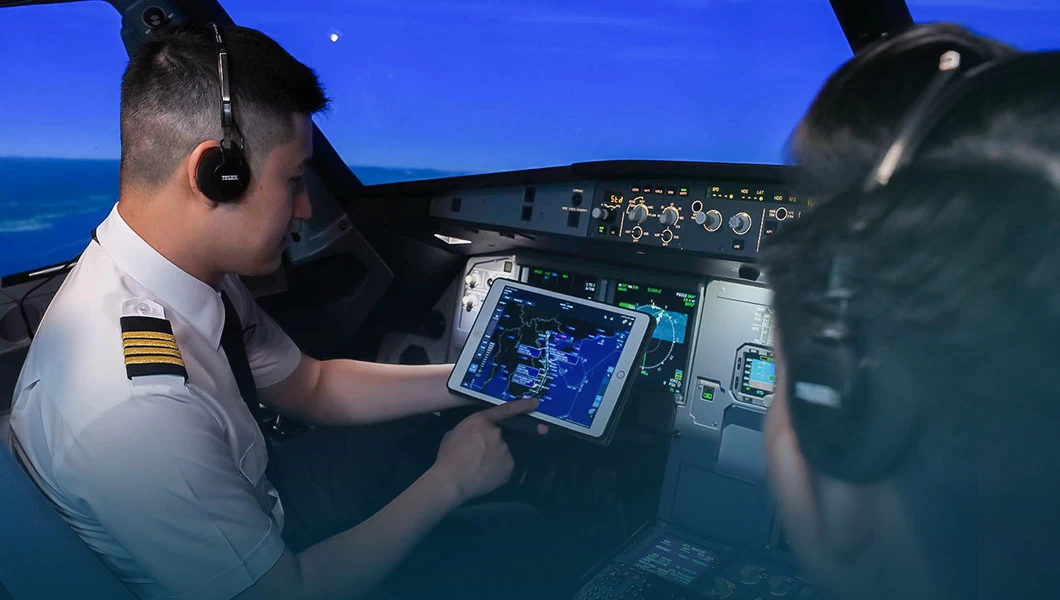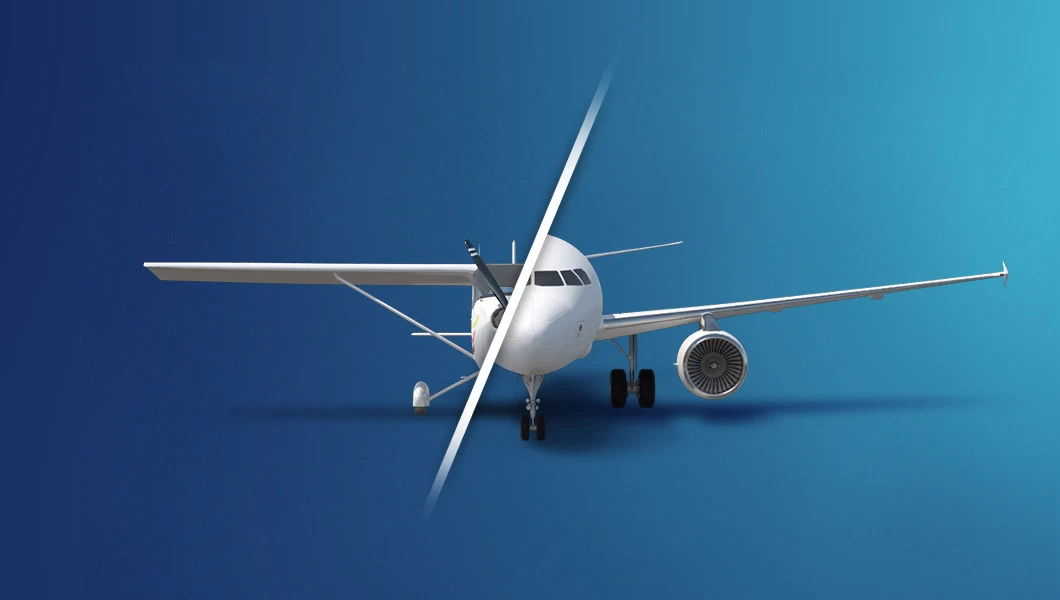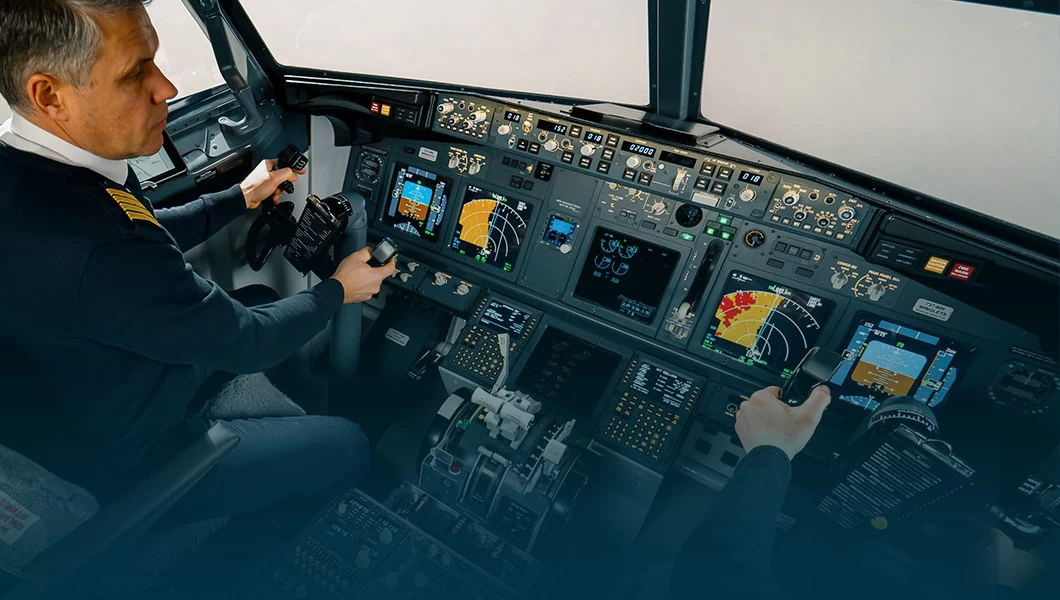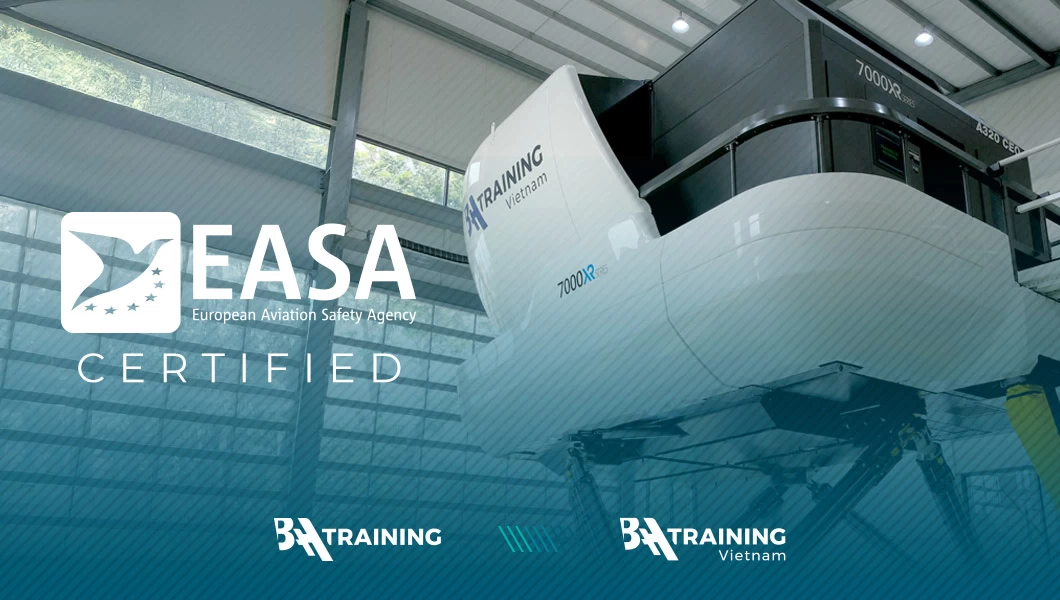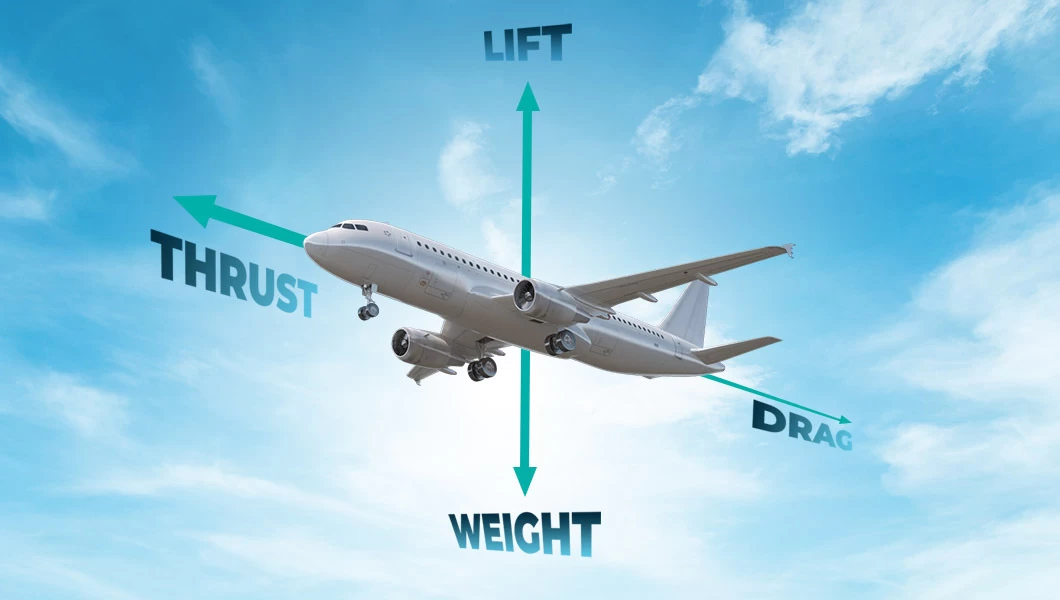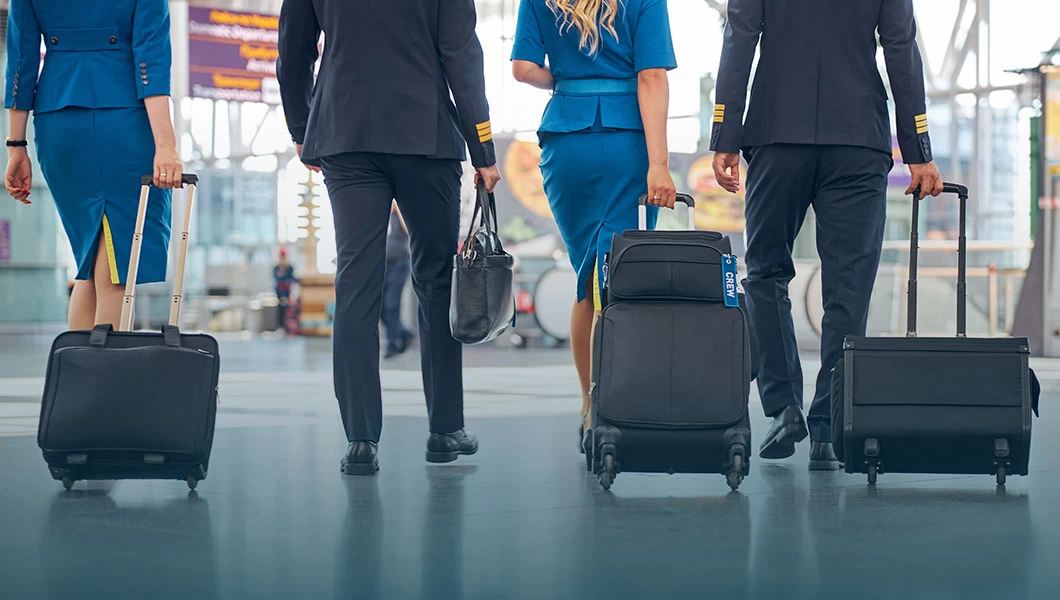Prefer to listen? Press play to hear this article.
These final phases are not only the most advanced but also the most critical steps that turn student pilots into qualified airline crew. Let’s break down what each one involves so you know exactly what to expect—and how to prepare.
Understanding Type Rating – Your Key to Operating Large Jets
To understand Type Rating in context, let’s quickly revisit the journey leading up to it. After completing ground school, passing CAA exams, and logging flight hours on small training aircraft—like the Cessna 172S used at BAA Training—you earn your Commercial Pilot License (CPL).
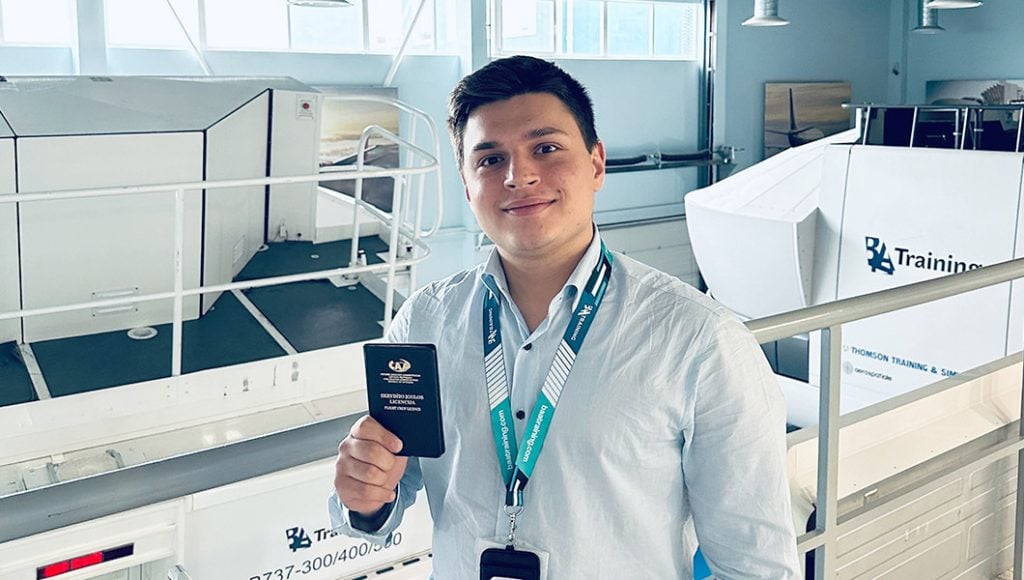
This license is a major achievement, but it doesn’t qualify you to fly a commercial jet. For that, you’ll need a Type Rating—specialized training for a specific aircraft type, such as an A320, B737, or ATR 72.
Type Rating is conducted almost entirely in full flight simulators. These high-fidelity simulators are replicas of real cockpits, sometimes costing up to €10 million. They allow safe practice of normal and emergency procedures (e.g. engine failures) and provide a risk-free environment to build confidence and precision. There, you’ll learn the aircraft’s systems, procedures, limitations, and how to handle everything from normal ops to in-flight emergencies.
Once complete, your Type Rating is endorsed on your license and is typically valid for 12 months from your last proficiency check. The duration of the course itself is usually around two months.
Multiple Type Ratings – Mission Possible
As your career progresses, you may acquire multiple Type Ratings—especially if your airline changes its fleet or you move to a new employer. These ratings can be either self-sponsored or, in some cases, funded by the airline. For instance, when an airline introduces a new aircraft type as part of a fleet update or expansion, it may choose to have its pilots type-rated on that specific model.
Issued by Respective Aviation Authorities
Keep in mind that Type Ratings, like licenses, must be issued by your respective aviation authority. For example, an EASA license requires an EASA Type Rating, whereas a DGCA license (India) requires a DGCA Type Rating, and so on and so forth. But if you need to switch jurisdictions, license conversion courses allow you to transition between authorities—e.g., converting an EASA CPL to an Indian CPL, followed by a DGCA-approved Type Rating.
At BAA Training, we offer programs that meet both EASA and DGCA standards to support your licensing path. Additionally, we provide Type Rating training approved by ANAC (the Brazilian aviation authority) and CAAV (the Vietnamese aviation authority), and more.
Type Rating at BAA Training
At BAA Training, you can complete your Type Rating for:
- A320
- B737 CL + Difference to NG
- B737 NG
- B737 MAX
- B747-400

Courses are delivered in Vilnius, Barcelona, Paris, or Ho Chi Minh, depending on aircraft type. Recurrent training, license proficiency checks, and simulator refreshers are also available.
Looking for training on aircraft types like Embraer, ATR, or Bombardier? We offer certified simulator training for nearly any aircraft type, with access to over 60 full flight simulators across 22 locations worldwide—including France, Singapore, Ireland, Austria, Germany, and other countries.
Coming Soon: Airline Assessment Preparation Course
Here’s a sneak peek at an exciting new offering coming soon from BAA Training—a value-added service designed to enhance your post-Type Rating journey. For an additional fee, you’ll be able to add the Pilot Assessment Training (PAT) course to your Type Rating program.
This course is specifically designed to prepare pilots for airline assessments, which typically take place after completing a Type Rating and function much like job interviews. The PAT course aims to familiarize you with the selection and evaluation processes used by airlines and to build confidence through hands-on experience in a flight simulator environment.
Throughout the course, you’ll:
Similar ARTICLES
- Learn how airline assessments are structured
- Understand key evaluation criteria
- Practice critical skills through simulator-based exercises
By the end of the program, you’ll be fully equipped to approach airline assessments with confidence—able to demonstrate your competencies effectively and meet industry expectations with ease.
Base Training – Your First Time on the Real Aircraft
Now that you understand what a Type Rating entails, you might be wondering—what exactly is Base Training?
This phase involves performing six take-offs (sometimes four, depending on the pilot’s experience) and landings (commonly known as touch-and-goes), including one go-around, in the actual aircraft—yes, your very first time flying the real jet outside of the simulator. Everything you’ve practiced so diligently in the full flight simulator is now put to the test. It feels familiar—and yet completely new—because this time, it’s happening in the real aircraft.
This is a crucial step in your pilot development. It allows you to demonstrate your ability to handle the aircraft safely and confidently in real conditions.
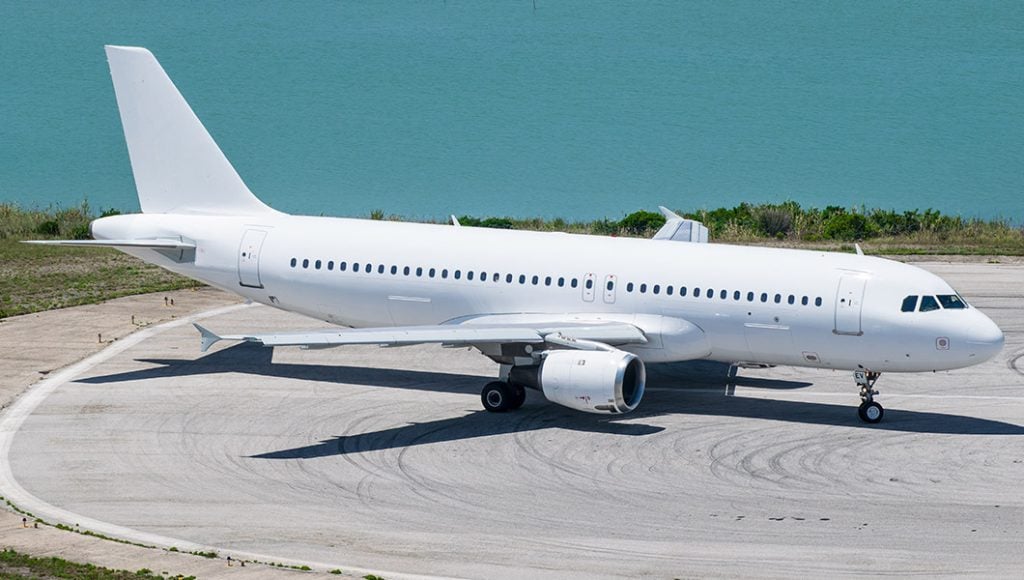
Base Training sessions typically take just one day and are conducted at designated airports. At BAA Training, we prioritize continuous training as a quality measure, with Base Training usually scheduled approximately two months after the program’s commencement.
Unlike many other pilot training schools, BAA Training includes Base Training as an integral part of the Type Rating package. This all-in-one approach often comes as a pleasant surprise to our students and is recognized as a significant added value.
Your PILOT CAREER
starts with a first click
Line Training – Where You Join an Airline as a New First Officer
Now we get to the real business—the stage where everything you’ve learned starts coming to life.
During Base Training, you completed touch-and-go landings on the real aircraft—but without passengers. Line Training, on the other hand, marks your transition into the world of actual commercial operations. This is where you begin flying real revenue flights with passengers, under the supervision of a Line Training Captain.
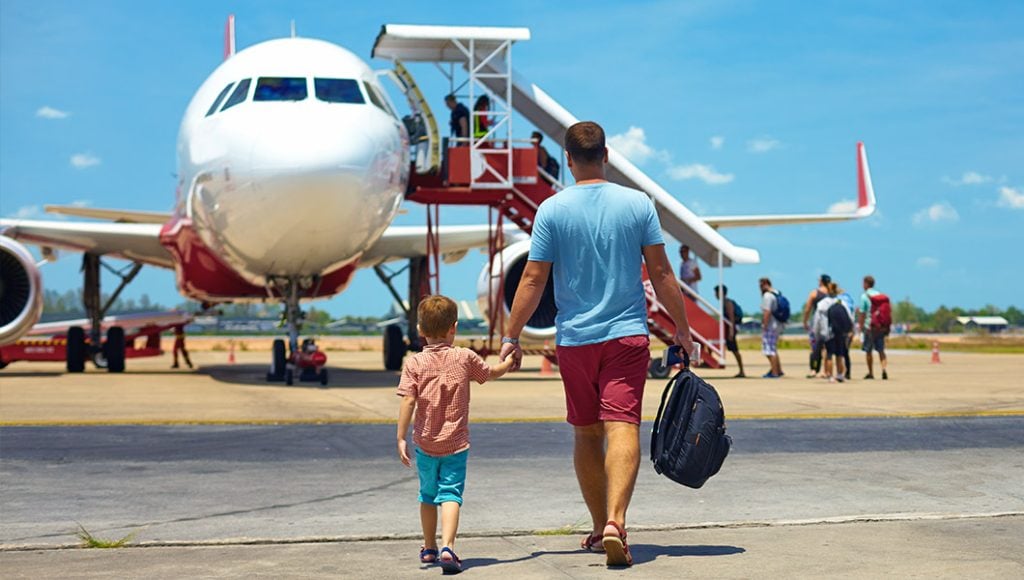
Gradually, you’ll gain hands-on experience with the full scope of airline operations: following SOPs, communicating with ATC, managing weather challenges, navigating delays, and dealing with the many dynamic elements of daily airline life.
Unlike earlier phases, Line Training isn’t defined by a specific number of days or weeks. Instead, it’s measured in sectors—each one being a single flight leg (from Point A to Point B). Most airlines require pilots to complete between 40 and 100 sectors, depending on factors such as arline procedures and local regulations, your progress and performance, and route complexity and aircraft type. To give you a practical example: a short-haul pilot flying four sectors a day (two round trips) could complete 40 sectors in just about 10 days—though in reality, the duration often varies.
What Does Flying “Under Supervision” Mean?
During Line Training, you may be referred to as a line training cadet, trainee First Officer, or simply a new FO. You’ll sit in the right-hand seat and fly the aircraft as either Pilot Flying (PF) or Pilot Monitoring (PM)—just like in standard operations. However, you’re always paired with a Line Training Captain—an experienced, certified instructor who:
- Guides and monitors your performance
- Provides continuous feedback and mentorship
- Takes full responsibility for the flight
- Is ready to step in at any moment if needed
Their goal is to help you transition smoothly into the role of a fully operational First Officer, all while ensuring the safety and quality of each flight.
The Line Check – Your Final Step
Once you’ve completed the required number of sectors and consistently demonstrated your competence, you’ll undergo a Line Check—a real-world flight observed by a Check Captain. This assessment determines whether you’re ready to operate flights independently.
Pass it, and you’ll be officially released from supervision—free to fly with any regular Captain, fully qualified and confident in your role as a First Officer.
Ready for Your New Endeavor as a Pilot?
We hope this breakdown has made Type Rating, Base Training, and Line Training feel less mysterious and more exciting. These truly are some of the most rewarding stages of your pilot training, bringing you one step closer to making your dream a reality.
At BAA Training, we’re here to guide you every step of the way. If you have any questions about training, Type Ratings, or career planning, don’t hesitate to get in touch.
Blue skies and happy landings!

